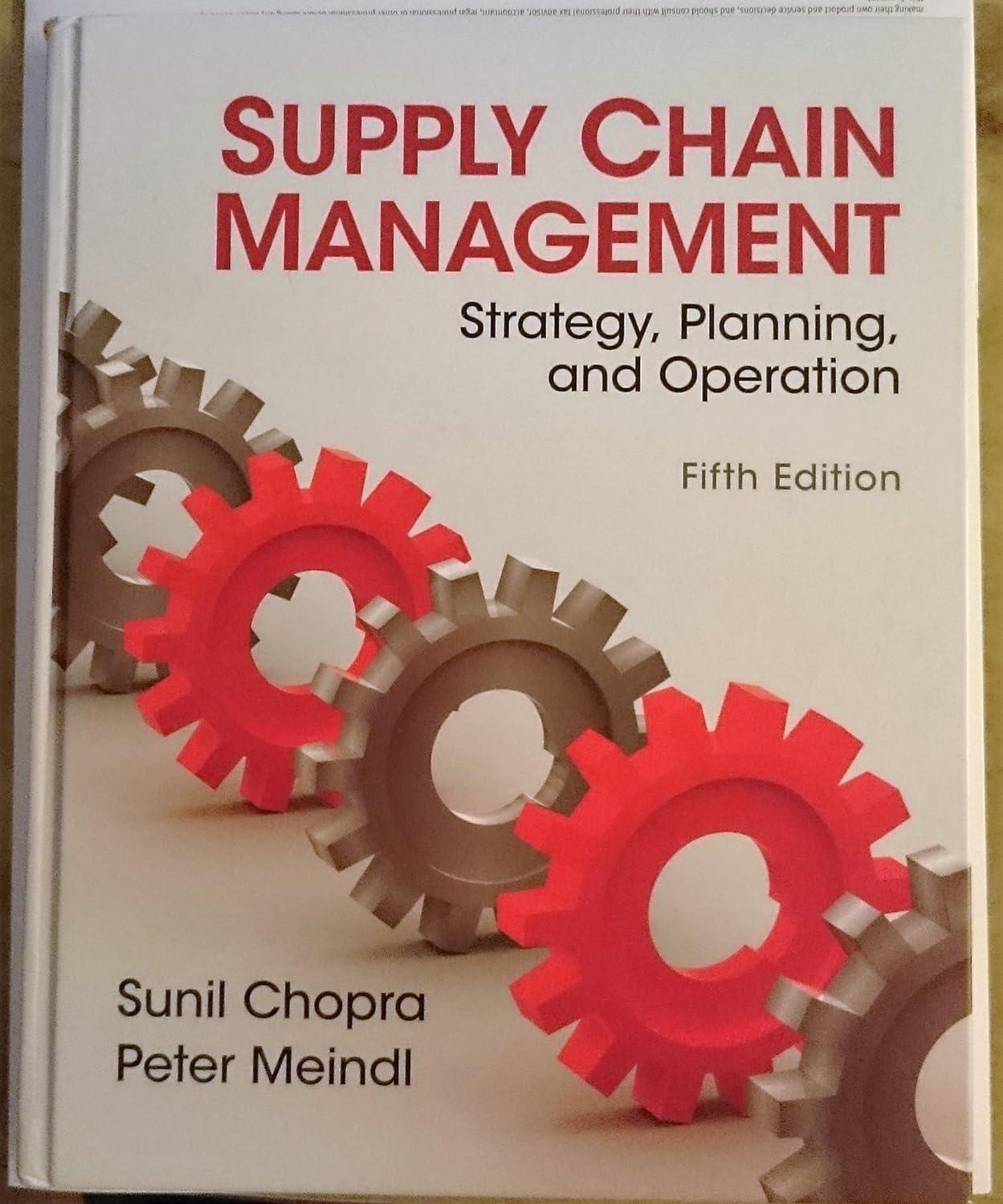Motorola obtains cell phones from its contract manufacturer located in China to serve the U.S. market. The
Question:
Motorola obtains cell phones from its contract manufacturer located in China to serve the U.S. market. The U.S. market is served from a warehouse located in Memphis, Tennessee.
Daily demand at the Memphis warehouse is normally distributed, with a mean of 5,000 and a standard deviation of 4,000.
The warehouse aims for a CSL of 99 percent. The company is debating whether to use sea or air transportation from China.
Sea transportation results in a lead time of 36 days and costs
$0.50 per phone. Air transportation results in a lead time of 4 days and costs $1.50 per phone. Each phone costs $100, and Motorola uses a holding cost of 20 percent. Given the minimum lot sizes, Motorola would order 100,000 phones at a time (on average, once every 20 days) if using sea transport and 5,000 phones at a time (on average, daily) if using air transport. To begin with, assume that Motorola takes ownership of the inventory on delivery.
a. Assuming that Motorola follows a continuous review policy, what reorder point and safety inventory should the warehouse aim for when using sea or air transportation?
How many days of safety and cycle inventory will Motorola carry under each policy?
b. How many days of cycle inventory does Motorola carry under each policy?
c. Under a continuous review policy, do you recommend sea or air transportation if Motorola does not own the inventory while it is in transit? Does your answer change if Motorola has ownership of the inventory while it is in transit?
Step by Step Answer:






